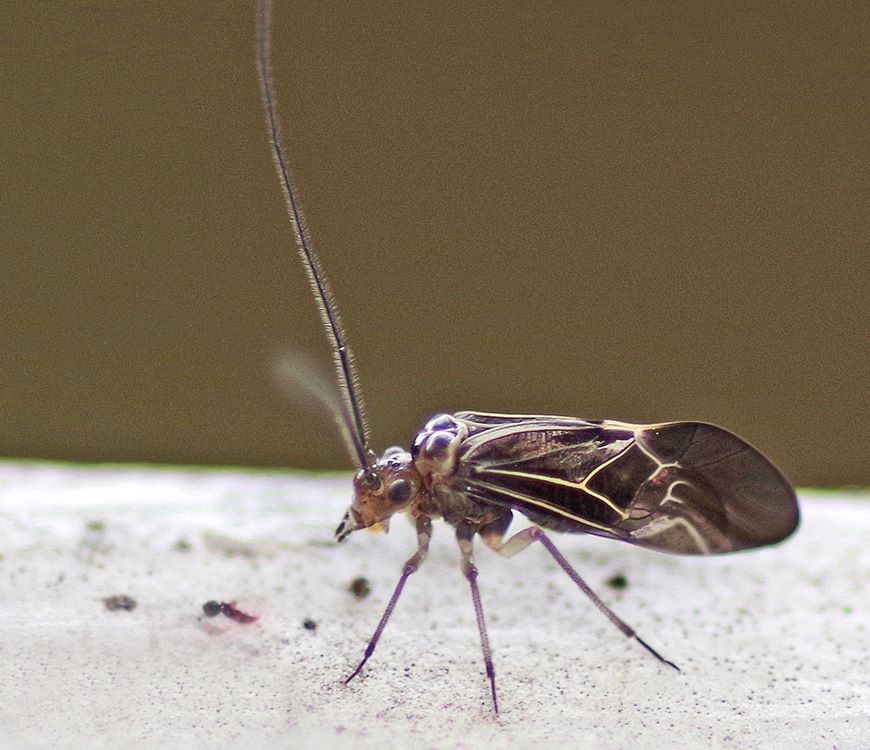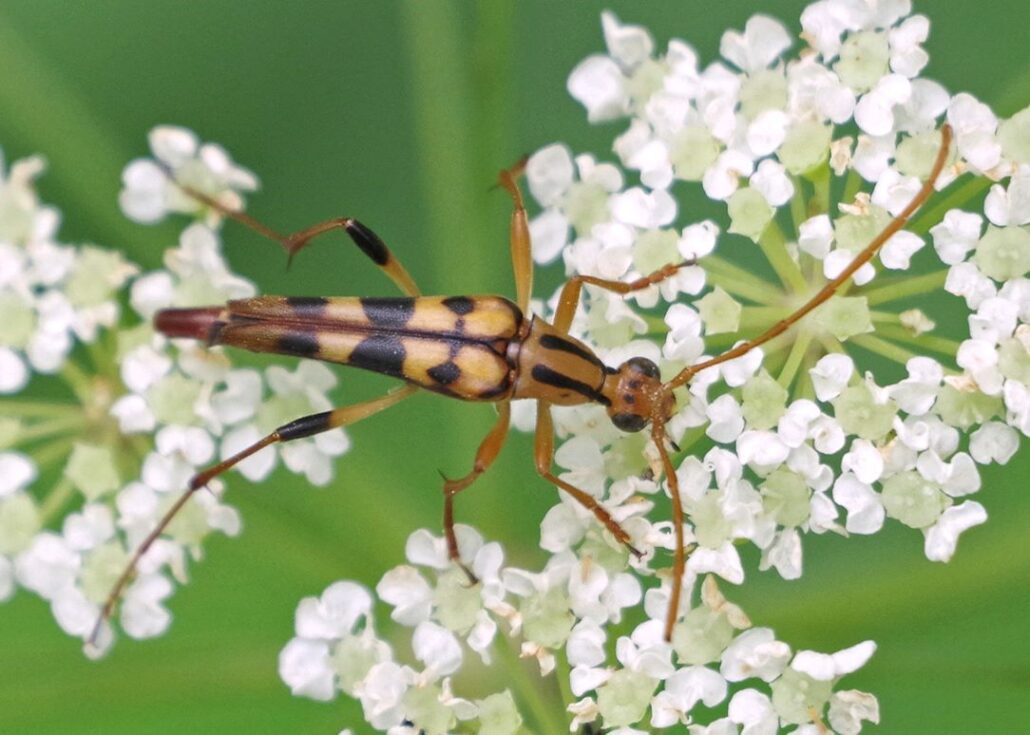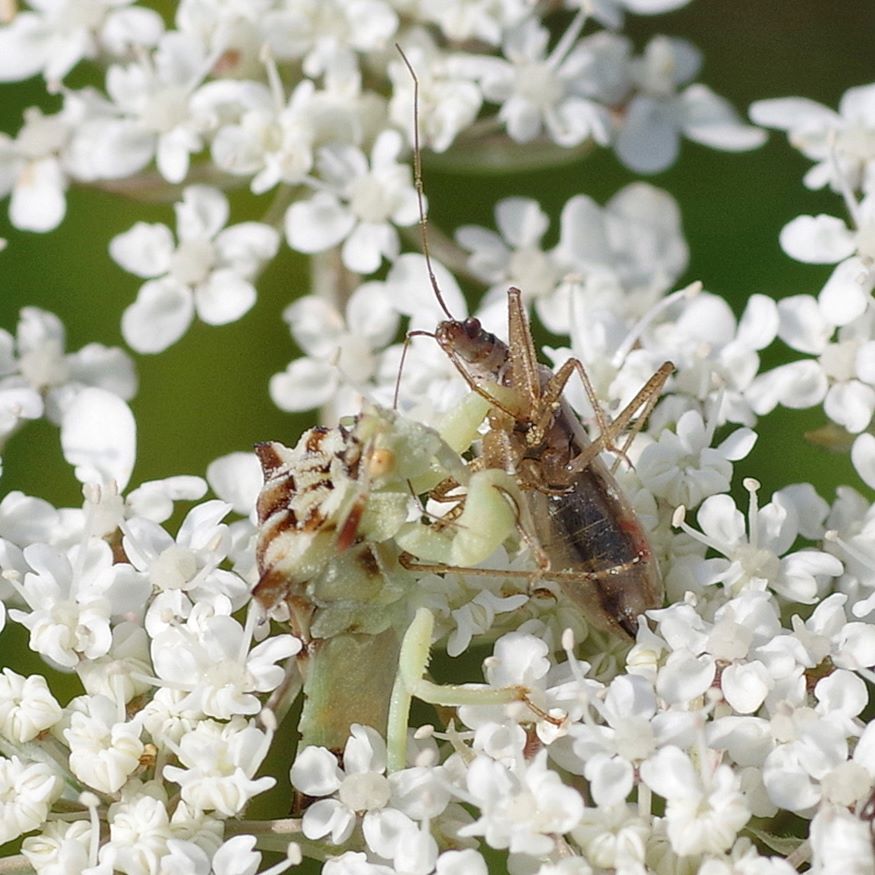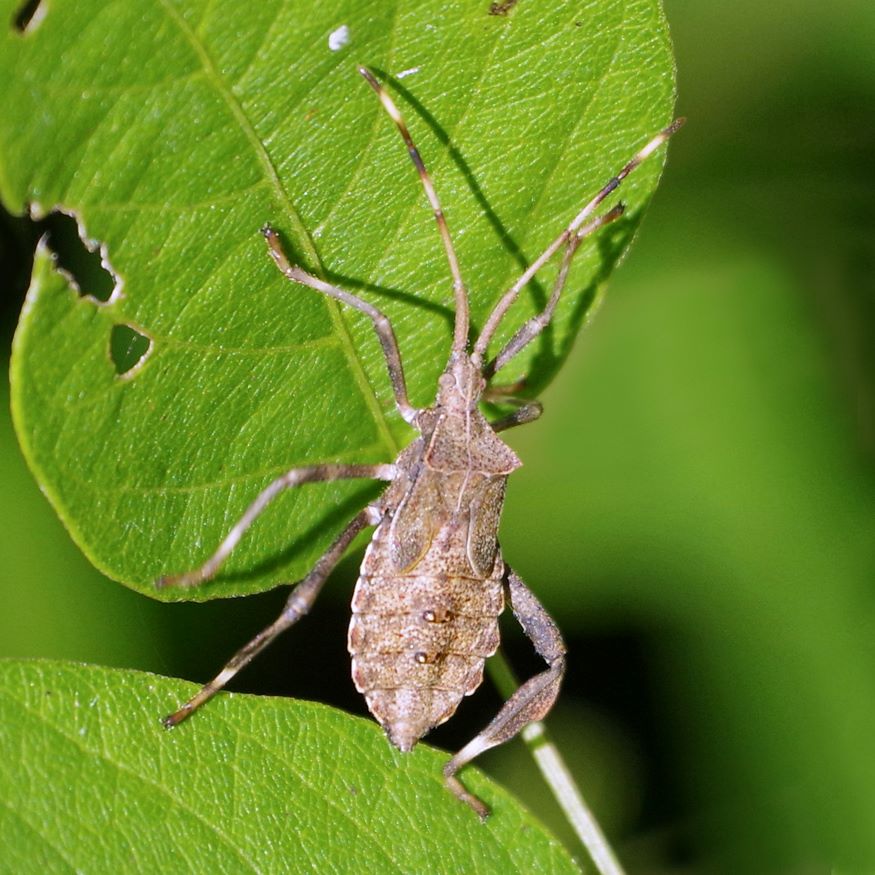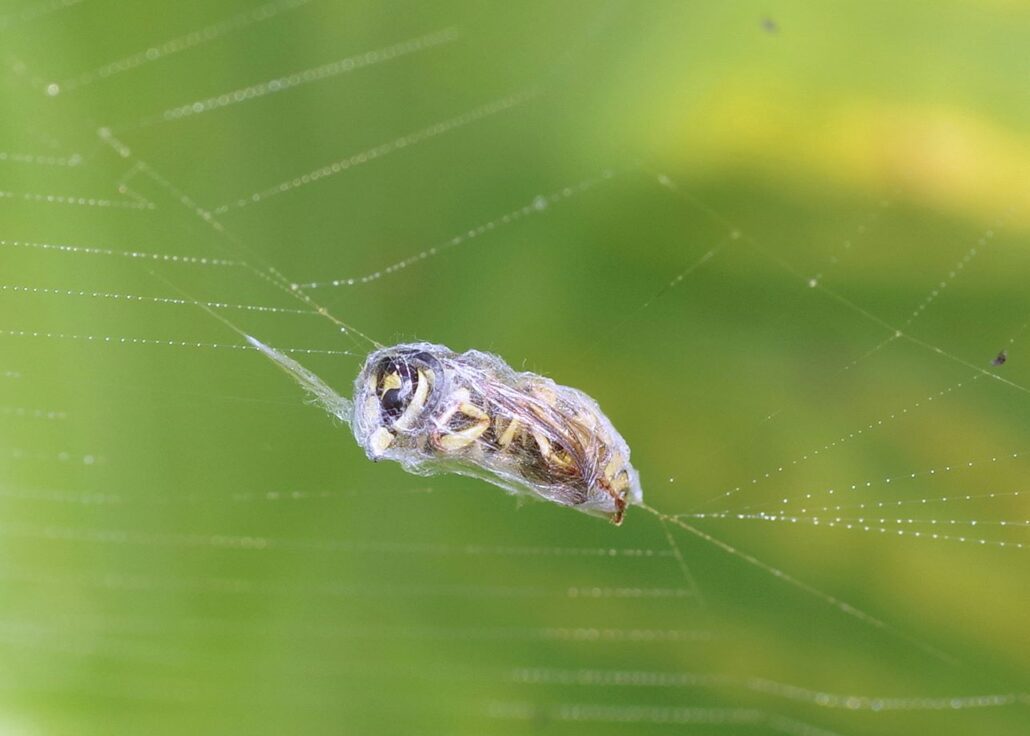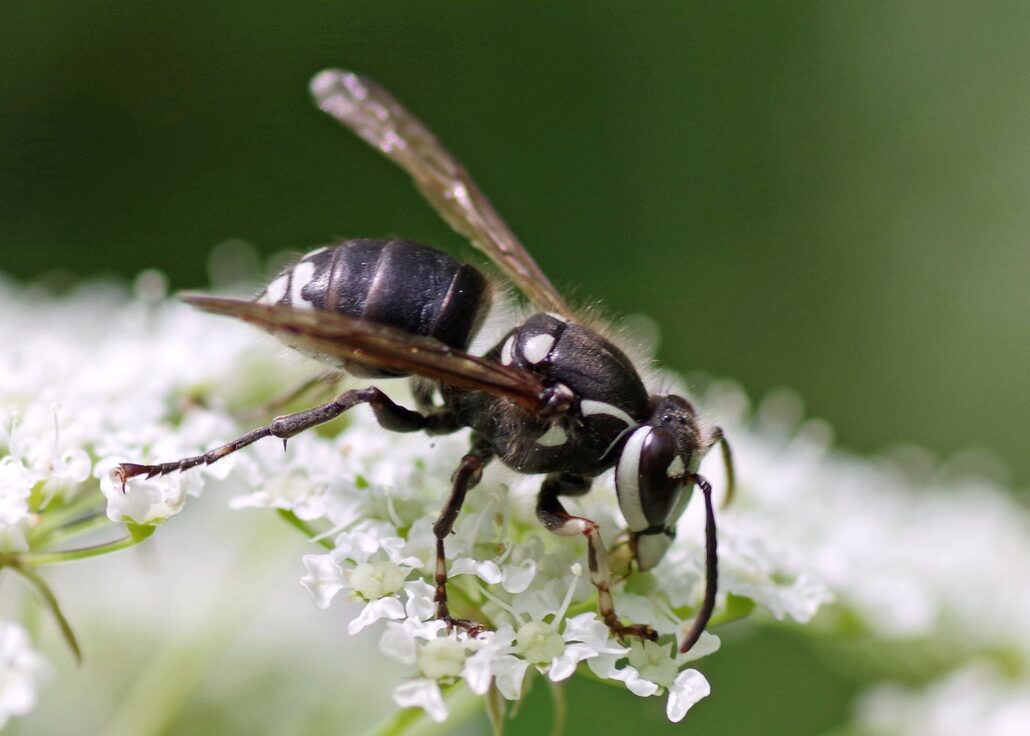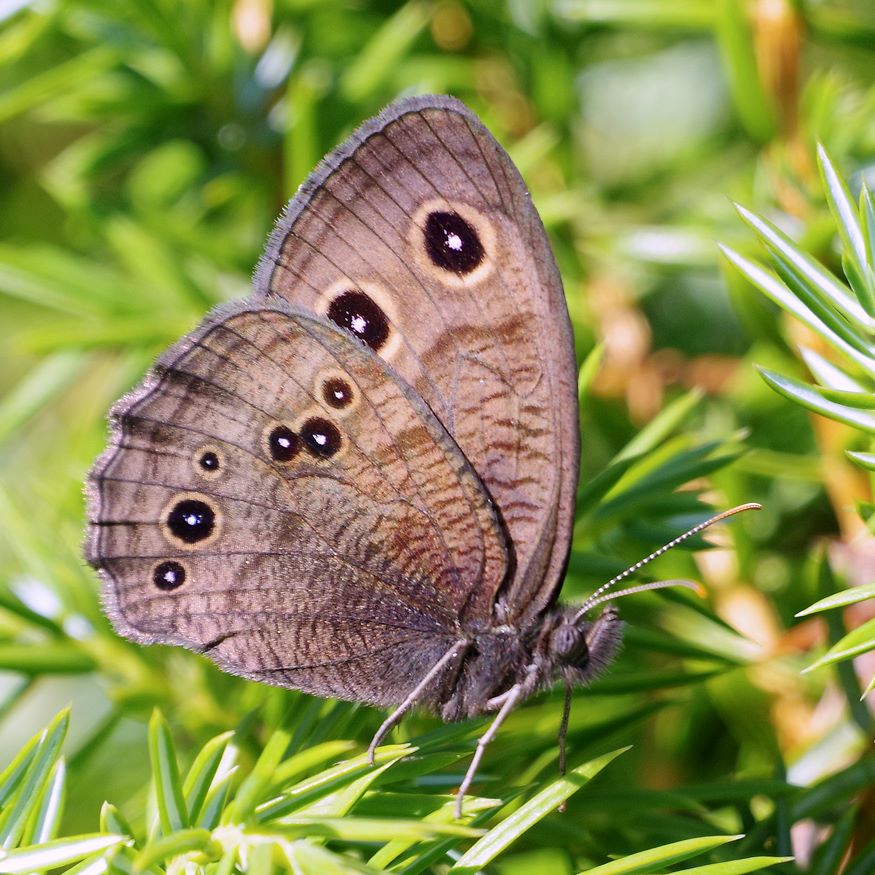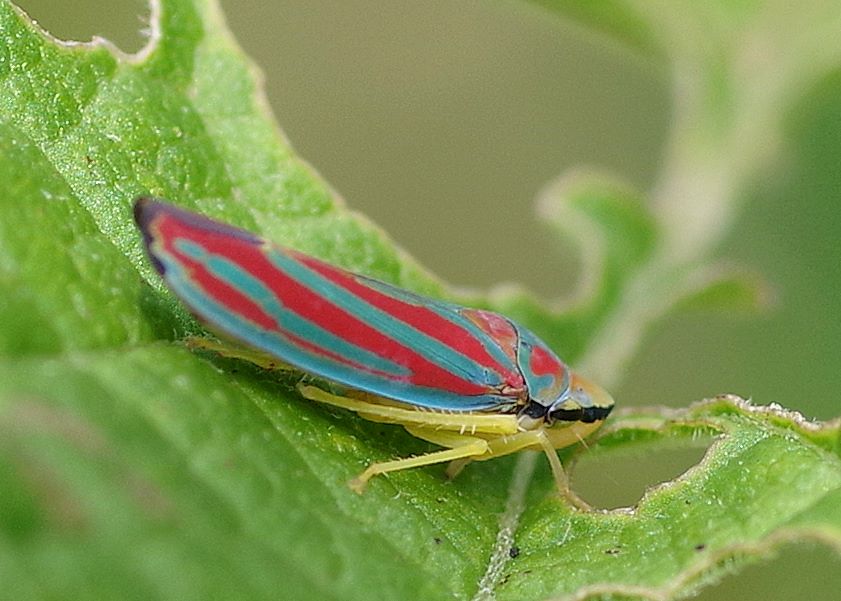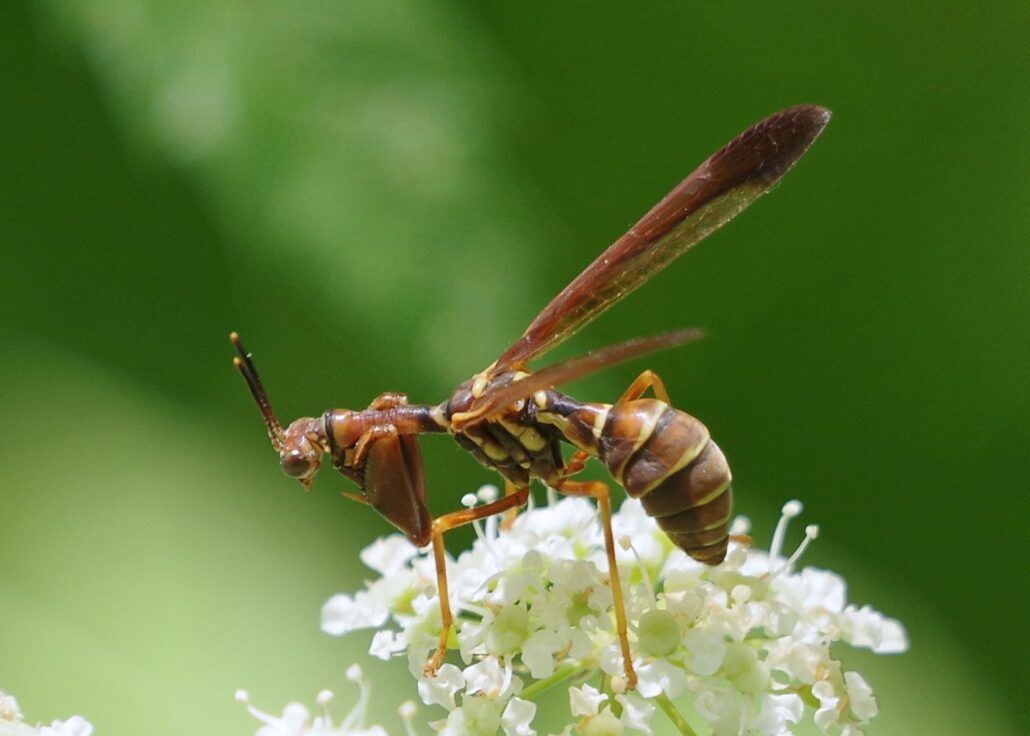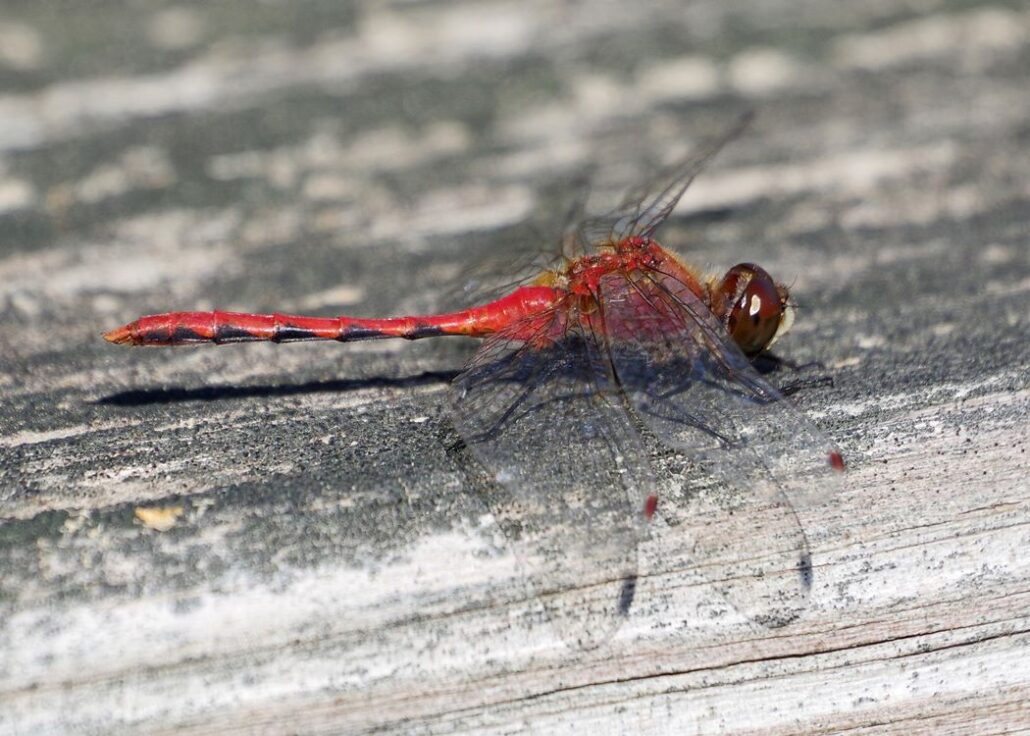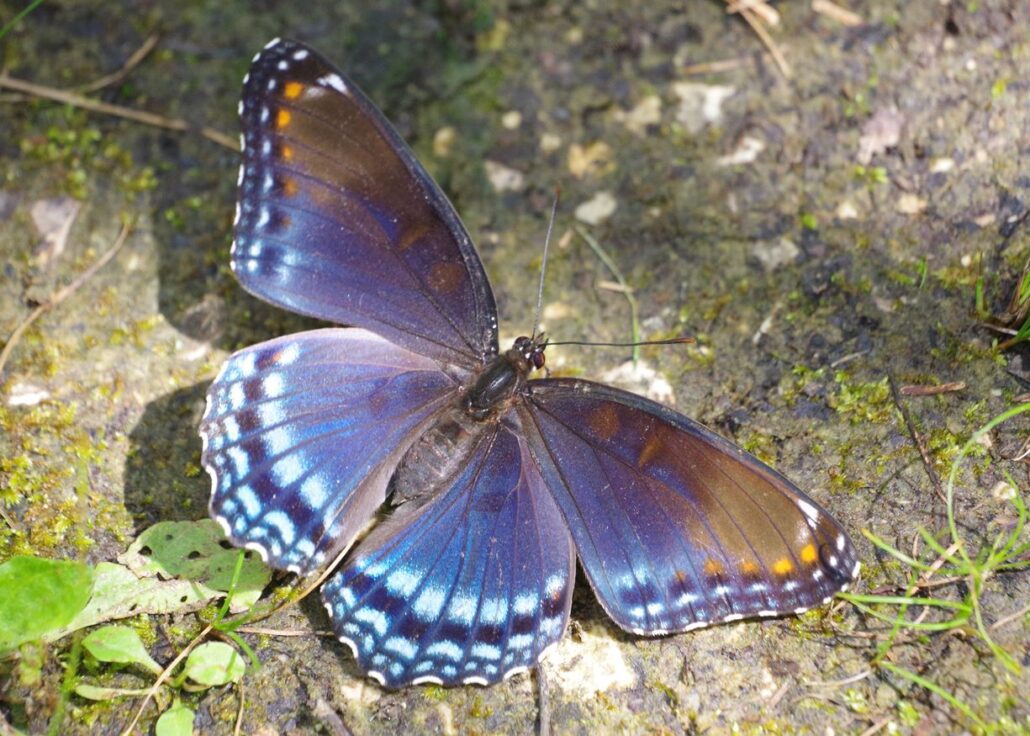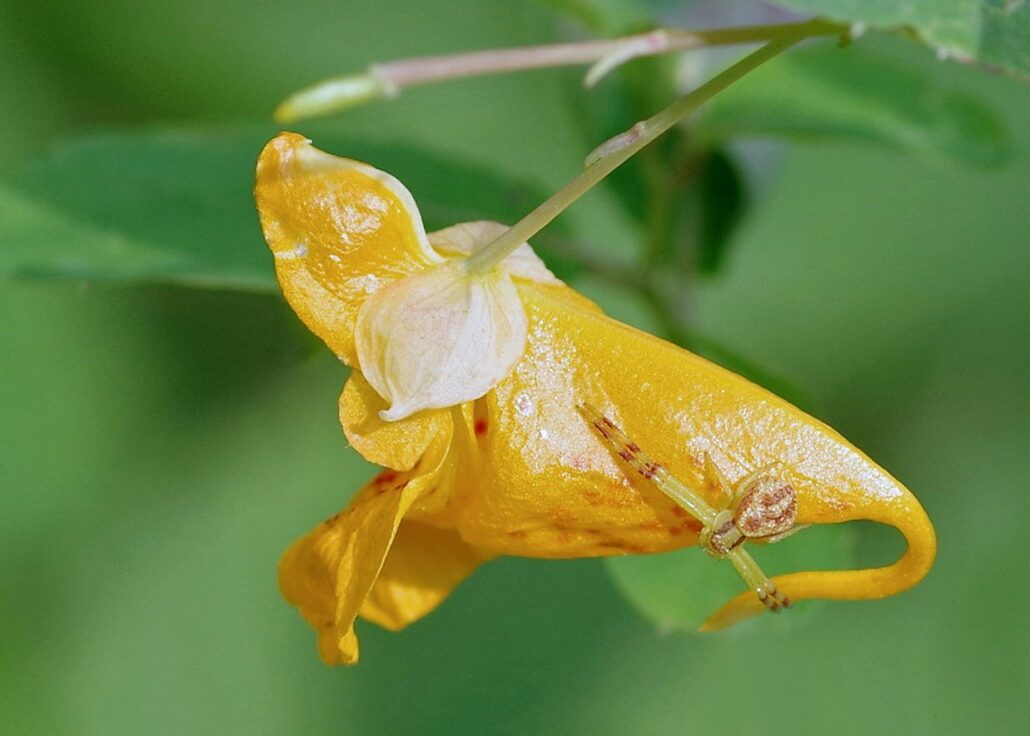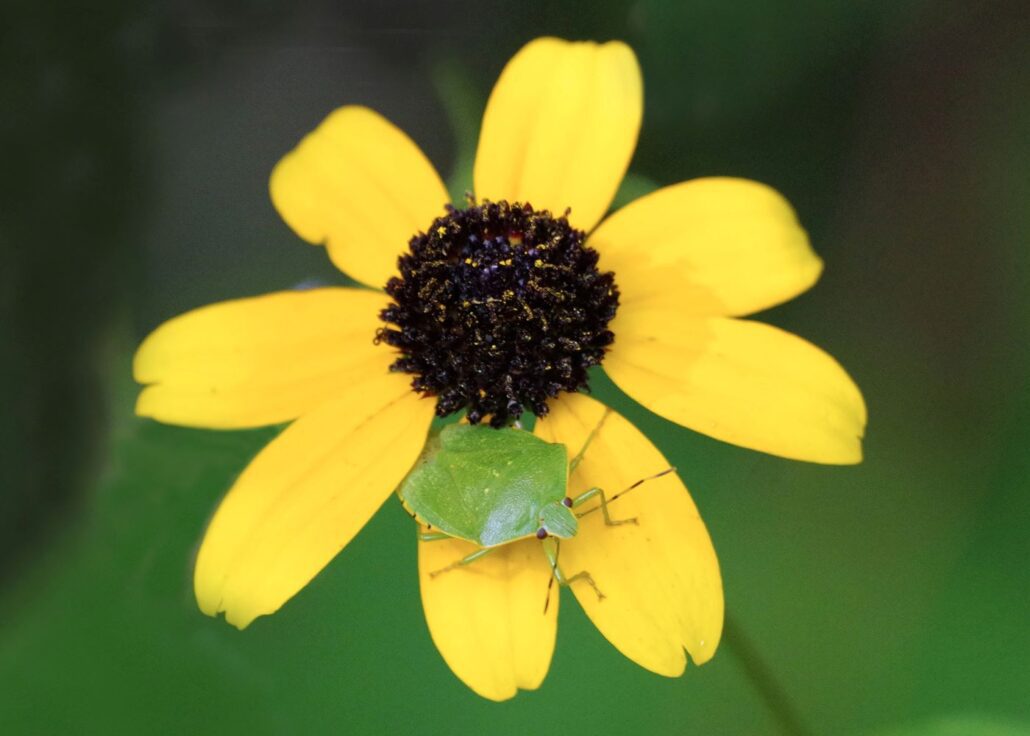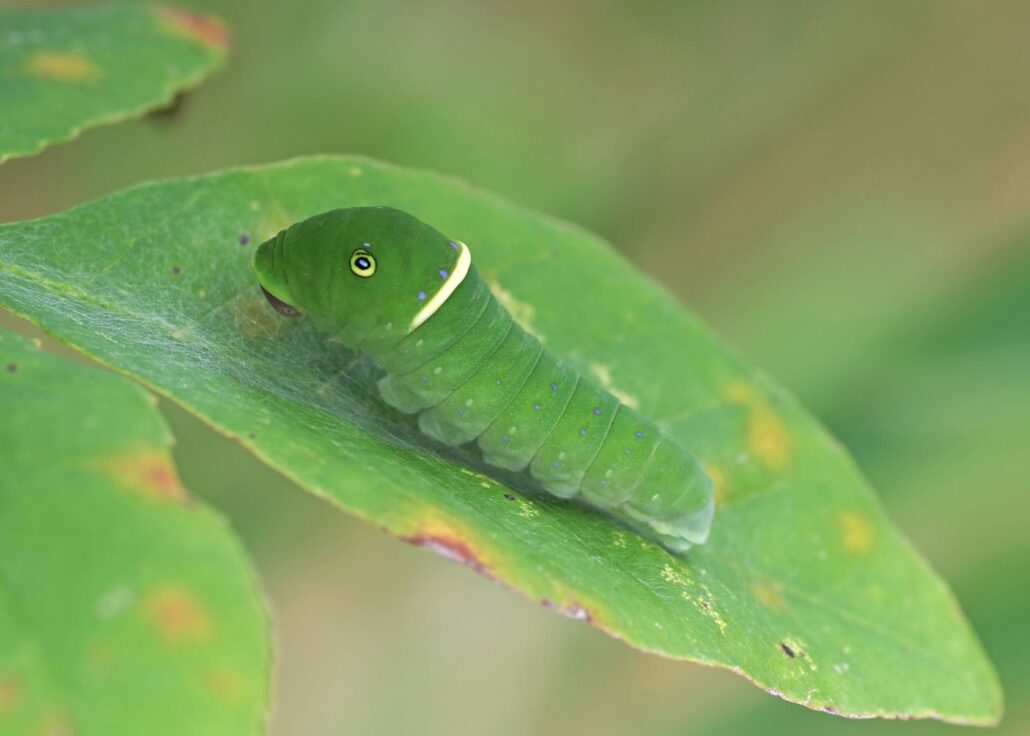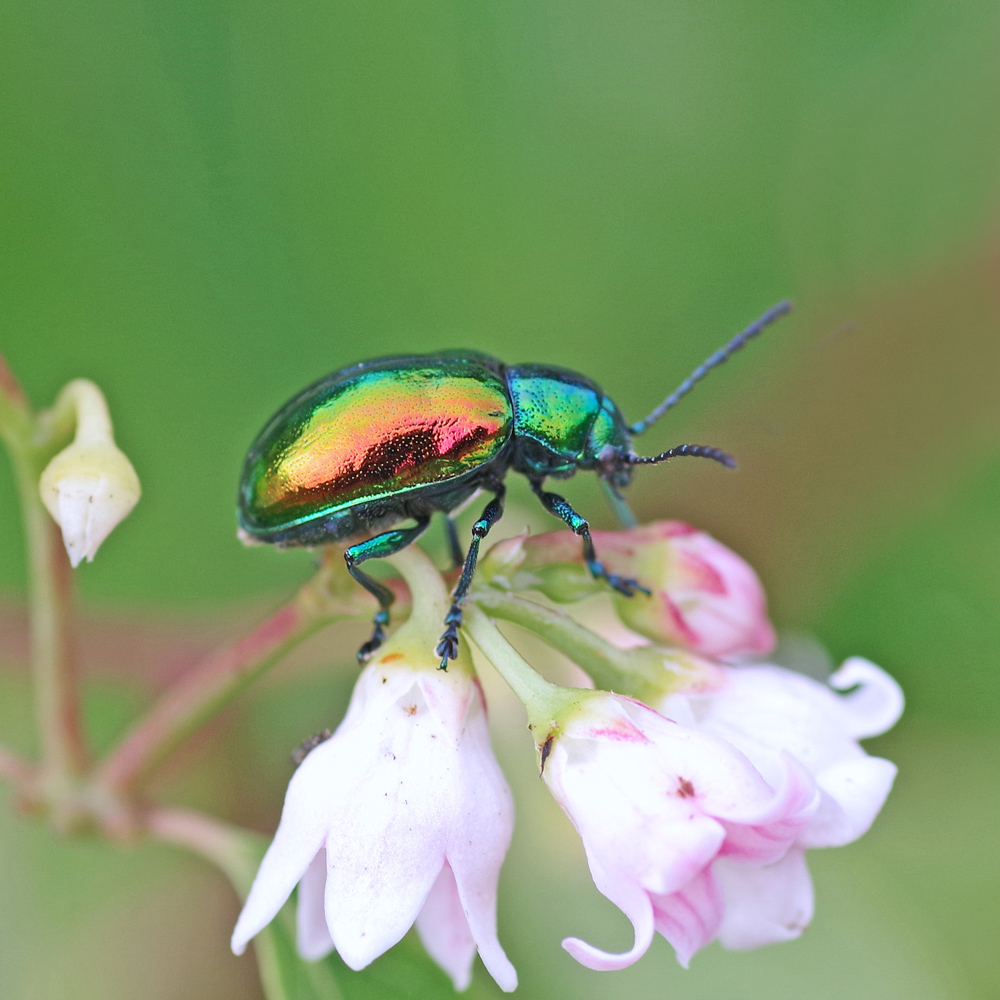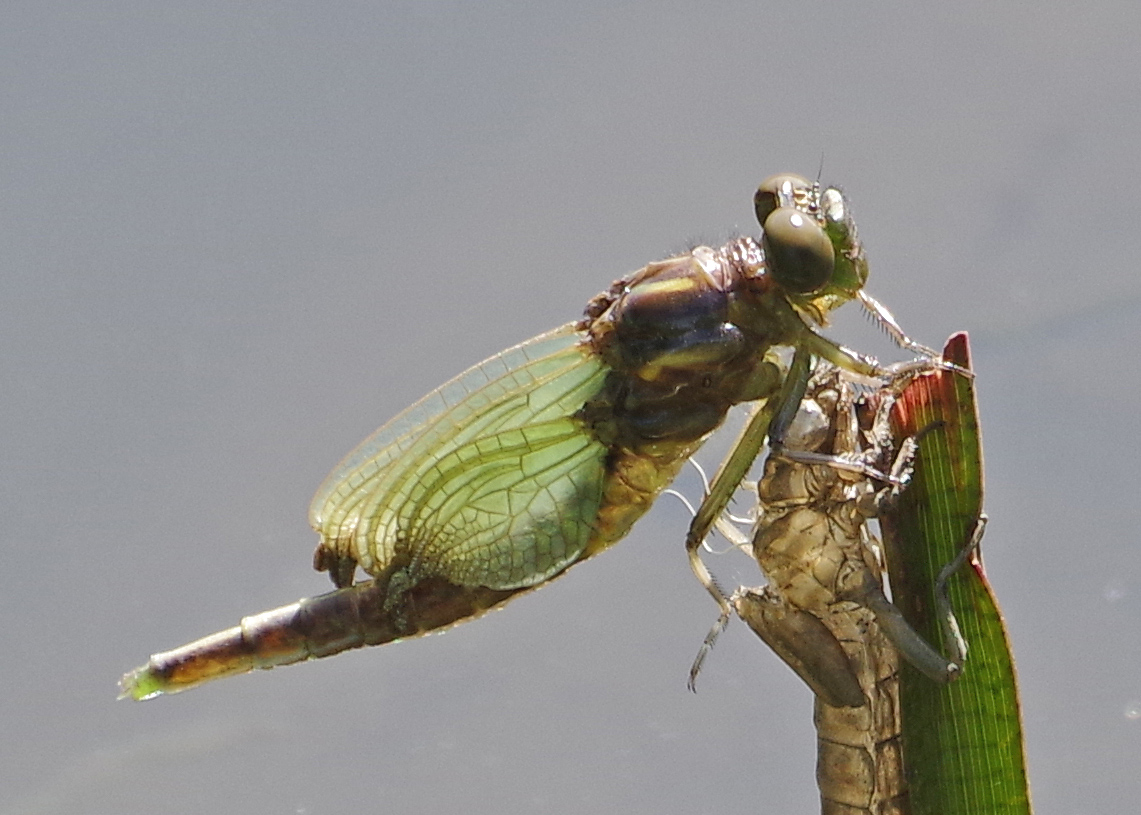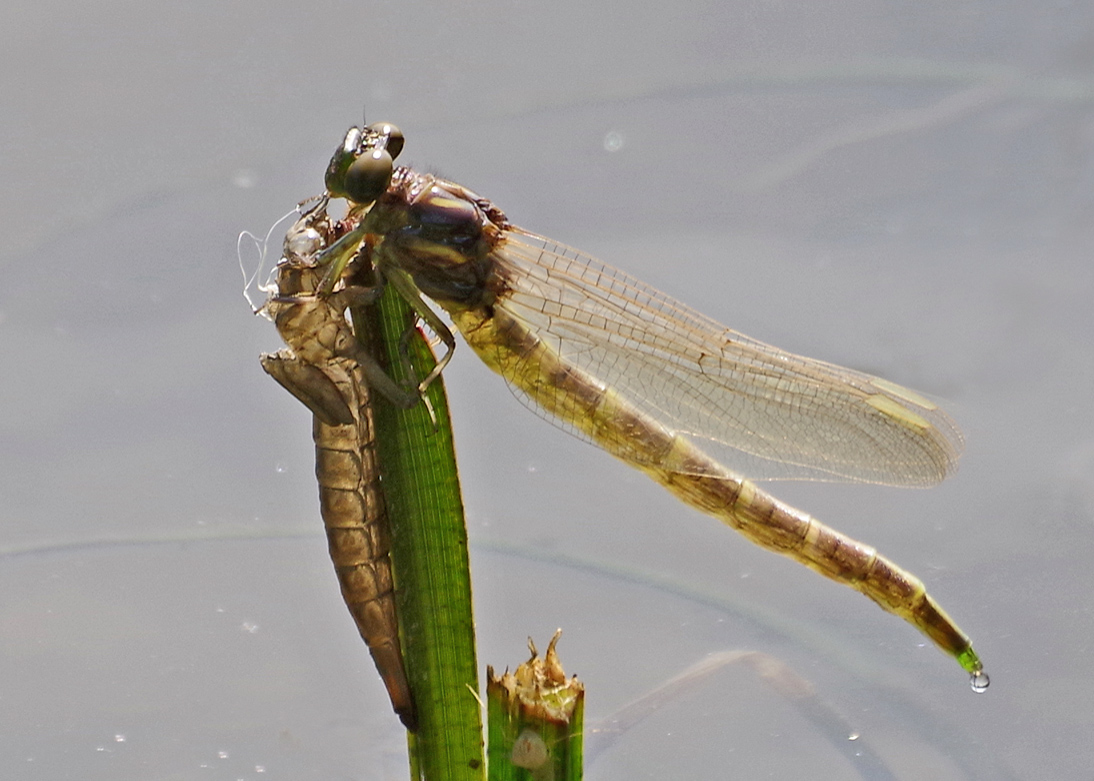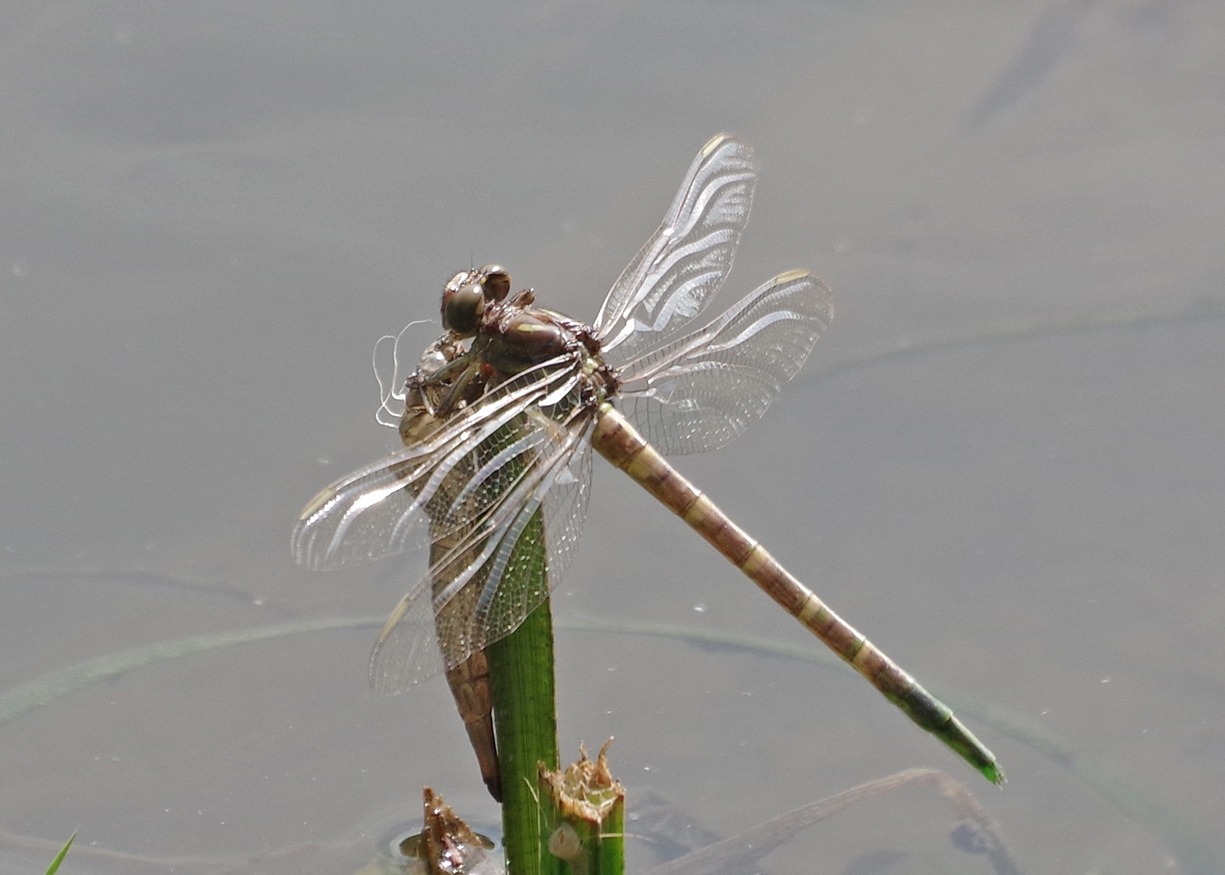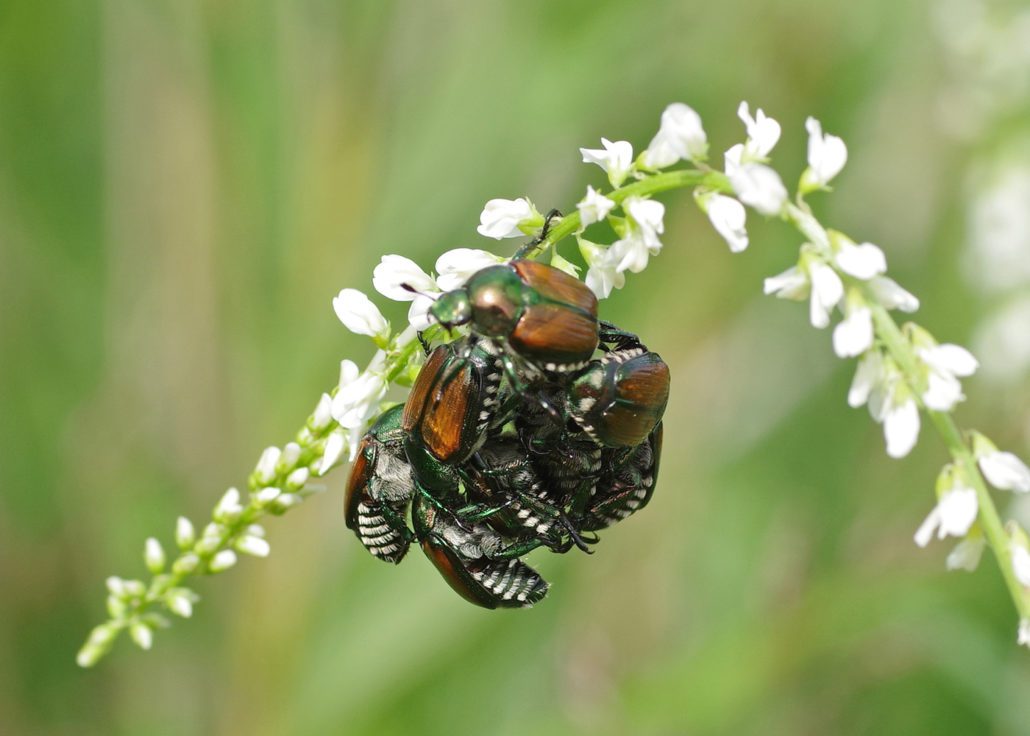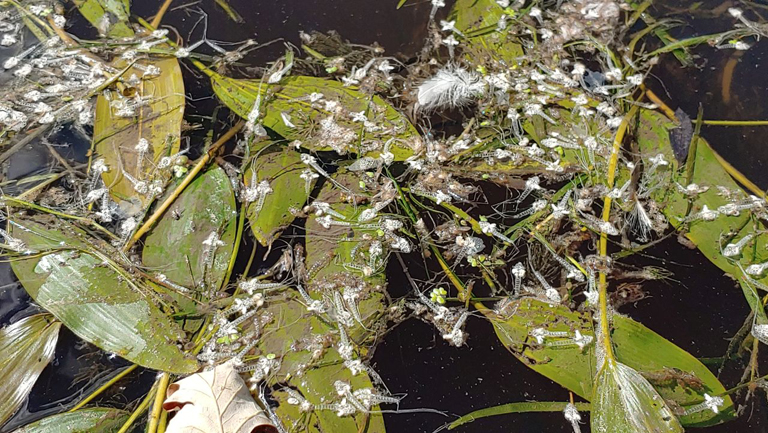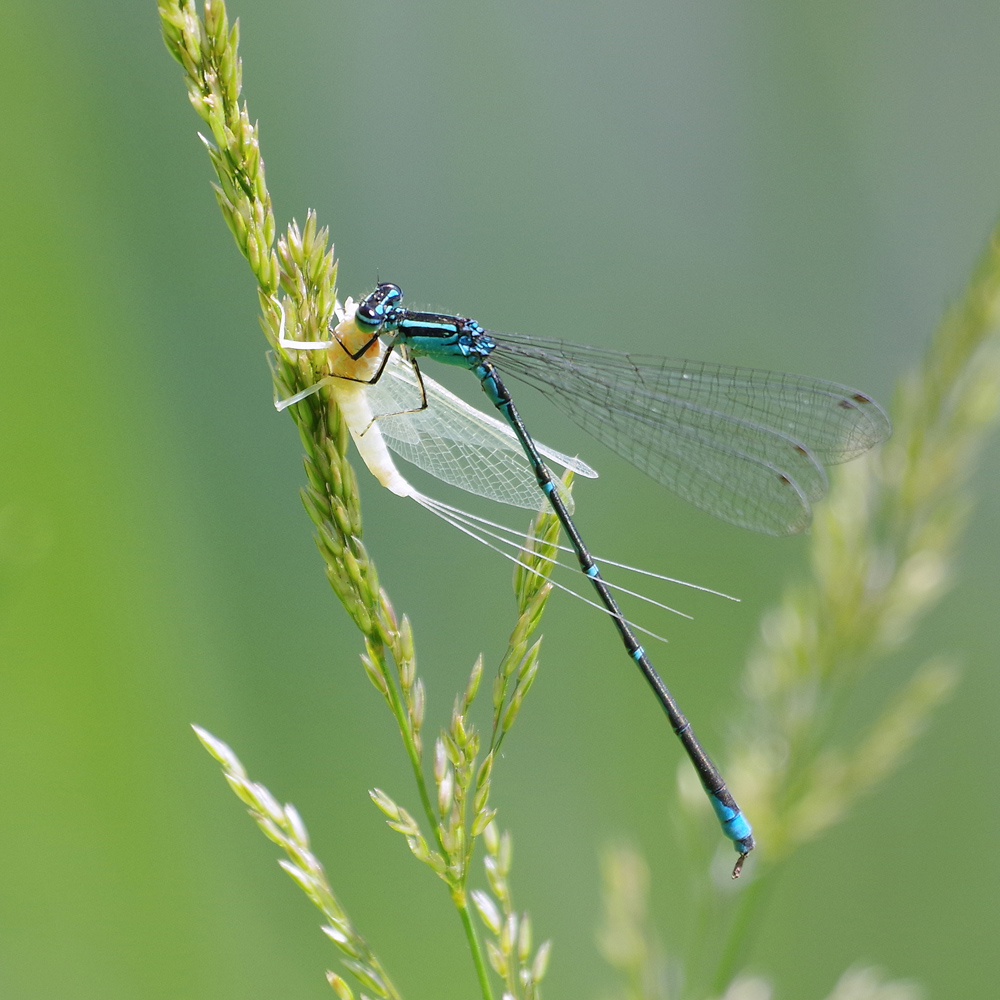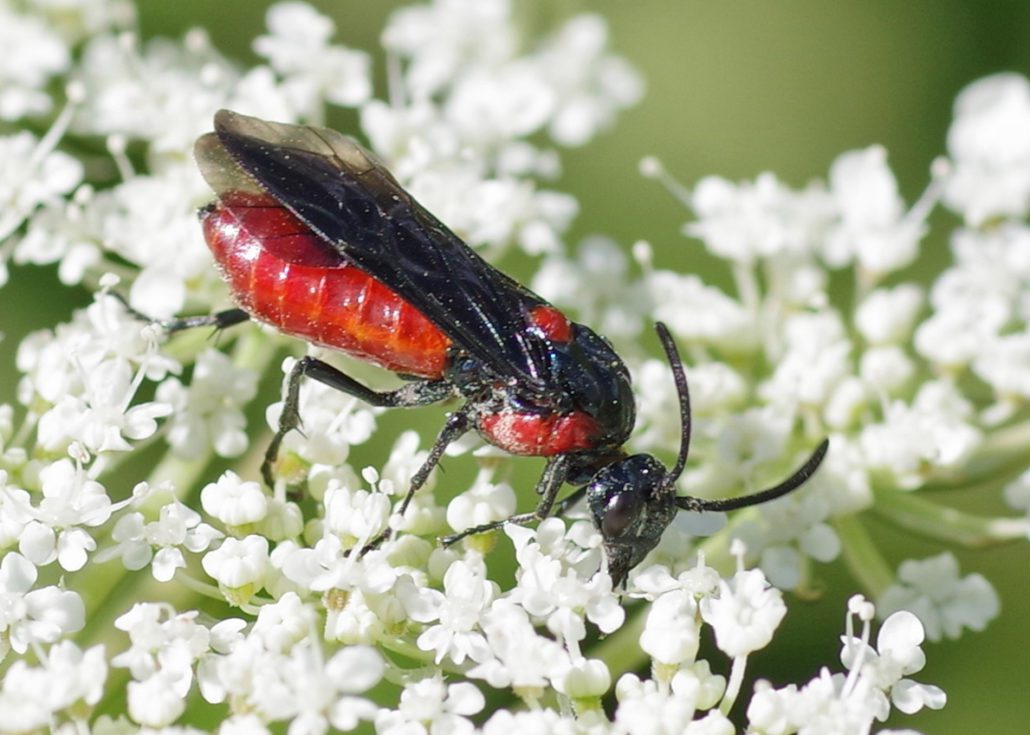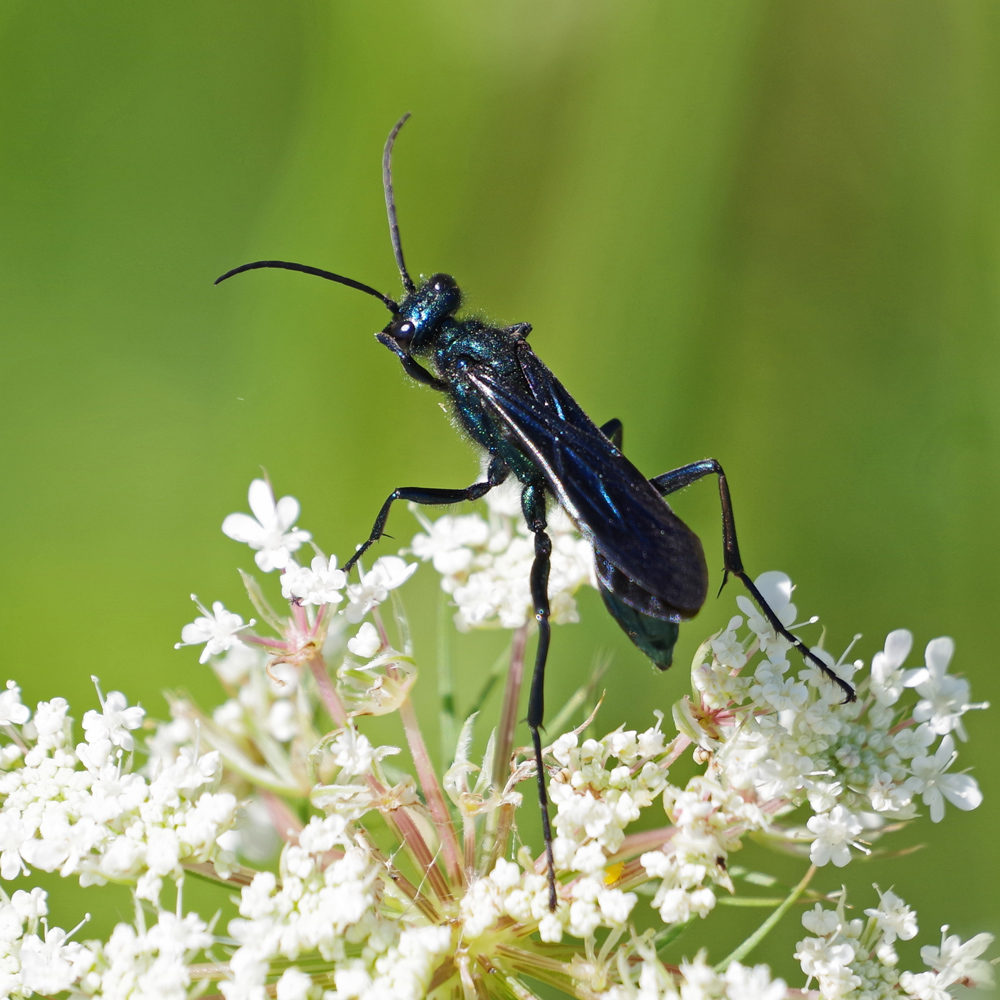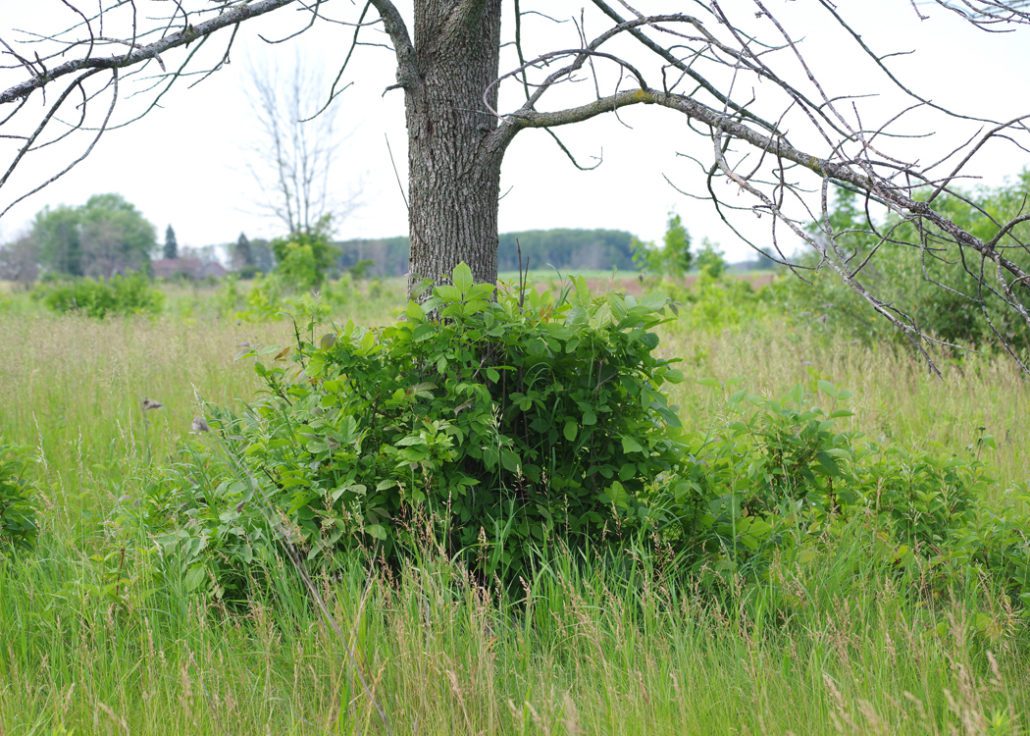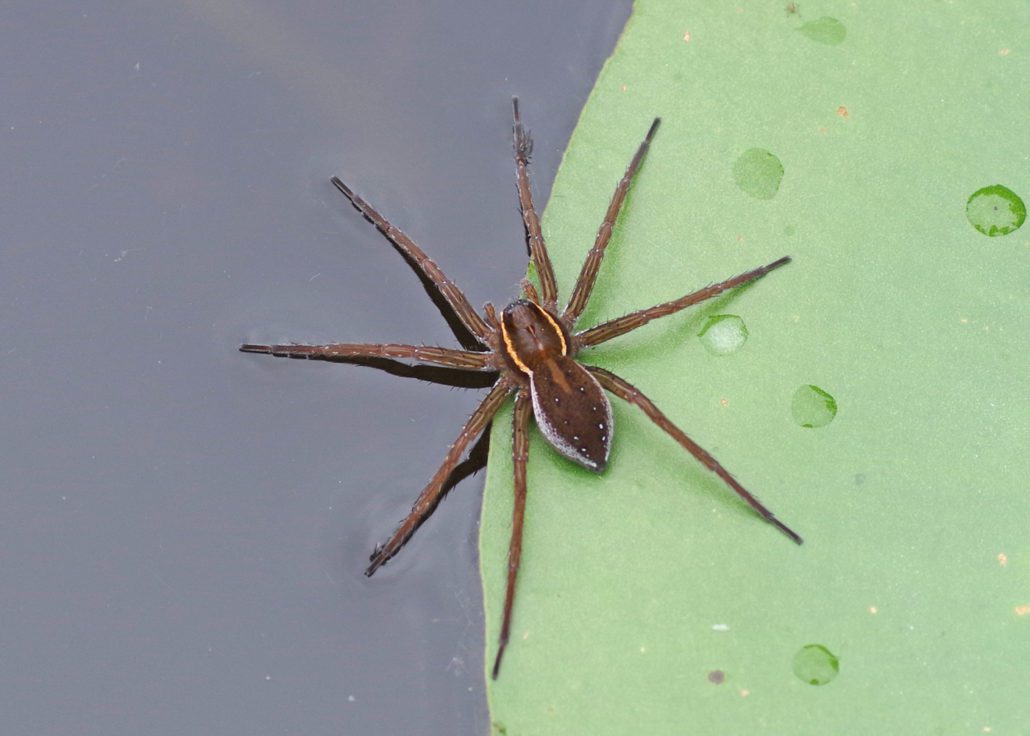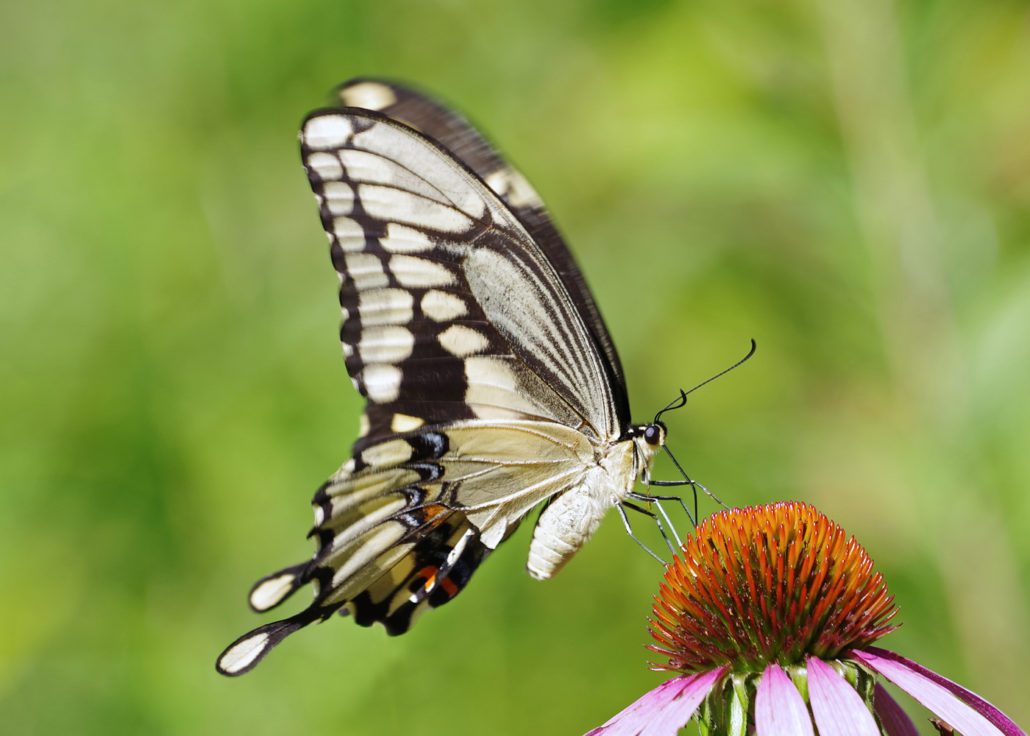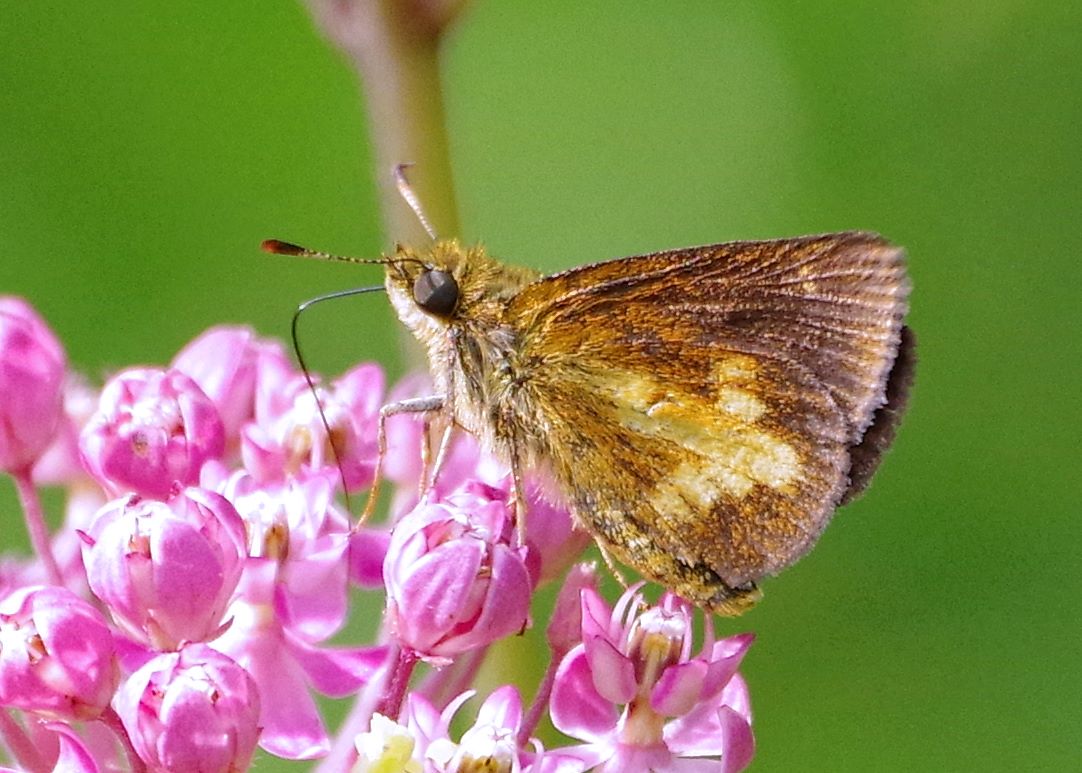
by Kate Redmond
Bug o’the Week Wildflower Watch – Swamp Milkweed
Howdy, BugFans,
The BugLady is already fantasizing about warm, sunny days in a wetland, photographing Swamp milkweed (and dragonflies), because she loves its color, and she loves being in wetlands, and because it’s a very busy plant, indeed!
Also called rose or red milkweed (there are a couple of species of southern milkweeds that are also called red milkweed), white Indian hemp, water nerve-root, and water silkweed, Swamp milkweed prefers damp soils and full sun near the water’s edge.
Indians, and later, the European settlers, used it medicinally (a tea made from the roots was reputed to “drive the worms from a person in one hour’s time”). It was used with caution – its sap is poisonous – and the cardiac glycosides that protect Monarchs also deter mammals from grazing on all but the very young plants. The fibers in its stem were twisted into rope and twine and were used in textiles.
Its flowers are typical milkweed flowers – a corona of five parts (hoods) with curved petals below and curved, nectar-secreting horns above. The flowers are tricky – sticky, golden, saddlebag-shaped pollinia are hidden behind what one author calls a trap door (a stigmatic slit). Insects walk around on the flower head, and when one of their feet slips through the slit by chance, a pollinium sticks to it. When the bug encounters a stigmatic slit on the next plant it visits, the pollen is inadvertently delivered. A quick-and-dirty, pick-up and delivery is what the plant had in mind; but, like the story of the raccoon (or was it a monkey) that reaches into the jar for a candy bar and then can’t pull its fist out of the small opening, sometimes the insect’s foot gets stuck to pollinia inside the trap door. Insects that can’t free themselves will die dangling from the flower, and insects that escape may be gummed up by the waxy structures. Look carefully for pollinia in the pictures.
Milkweeds support complex communities of invertebrates – their nectar attracts ants, bugs, beetles, flies, butterflies, moths, bees, and wasps, plus predators looking for a meal. Here are some of the insects that the BugLady sees on Swamp milkweed.
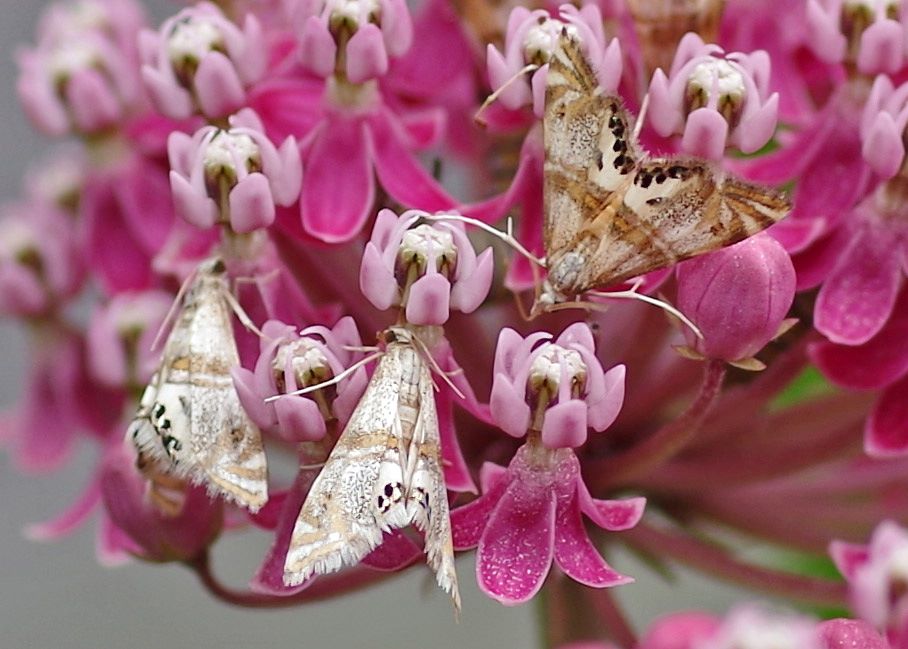
TWO-BANDED PETROPHILA MOTHS (Petrophila bifascialis) are delicate moths that lead a double life. By day, they sit sedately on streamside vegetation. By night, the female crawls down the side of a rock into the water – sometimes several feet down – to deposit her eggs on the stream bottom, breathing air that she brings with her, held against her ventral surface (“Petrophila” means “rock-lover”). Her larvae eventually attach themselves to a rock and spin a net to keep themselves there, feeding on diatoms and algae that they harvest from the rock’s surface with their mandibles.
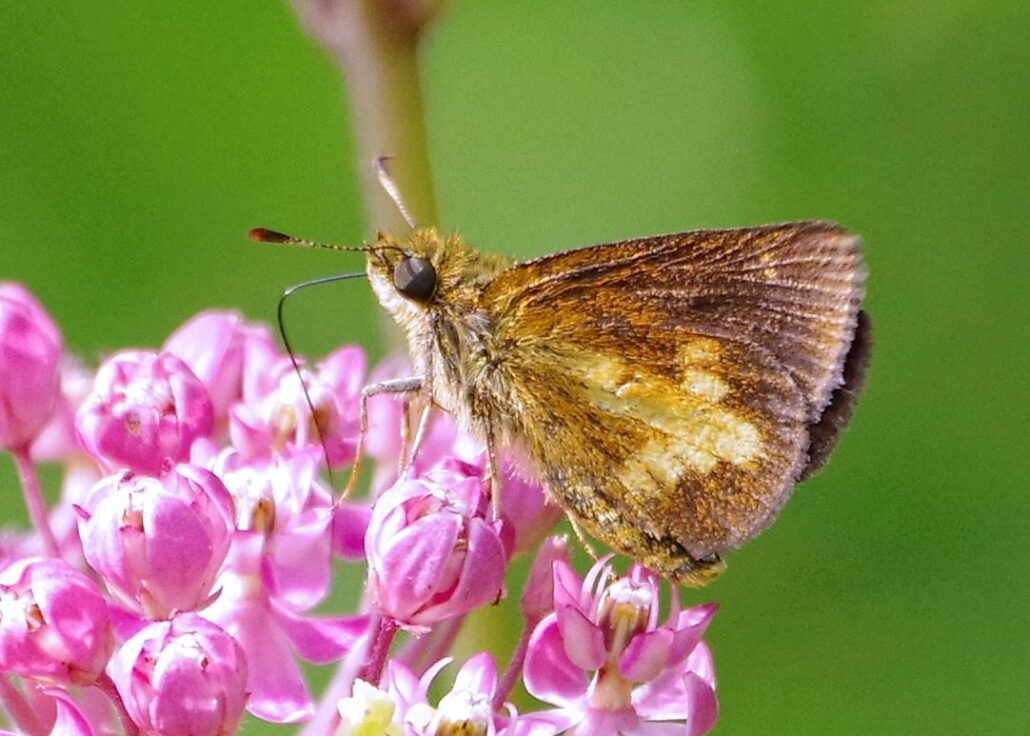
MULBERRY WING SKIPPER – A small (one-inch-ish wingspan) butterfly of wetlands with an arrow or airplane-shaped marking on its rich, chestnut-brown underwings (the upper surface of its wings looks completely different https://bugguide.net/node/view/34033/bgimage. Adults fly slowly through low vegetation, where females lay their eggs on the leaves of sedges.
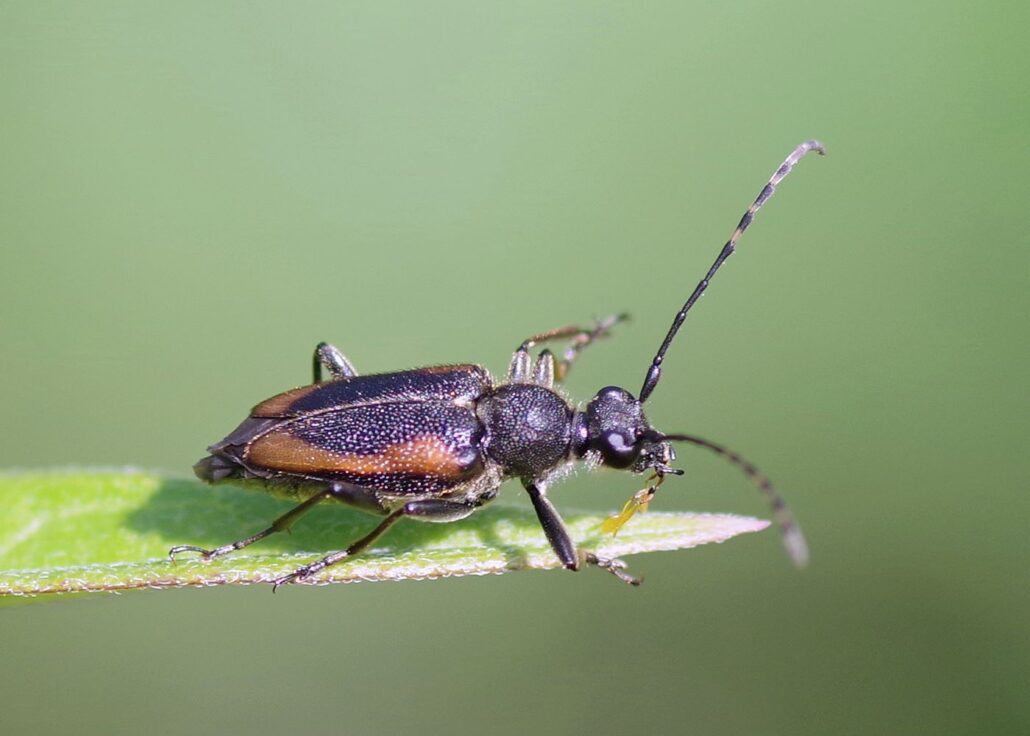
FLOWER LONGHORN BEETLE BRACHYLEPTURA CHAMPLAINI (no common name), on a Swamp milkweed leaf. Other than a “present” checkoff in a variety of natural area insect surveys, there’s just about nothing online about this beetle, and not much more in Evans’ book, Beetles of Eastern North America. It’s a long-horned beetle in the Flower longhorn subfamily Lepturinae, a group that feeds on pollen in the daytime. This one has pollinia on its mouthparts.
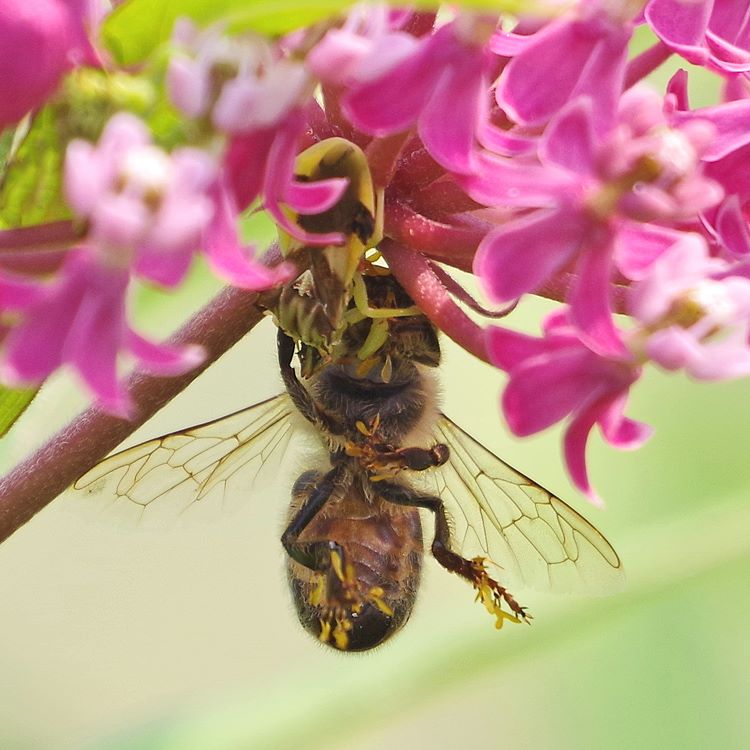
AMBUSH BUG – The dangling bee in this picture did not fall victim to the sticky pollinia (though it has plenty of them on its legs). A well-camouflaged ambush bug snagged it as it visited the flower.
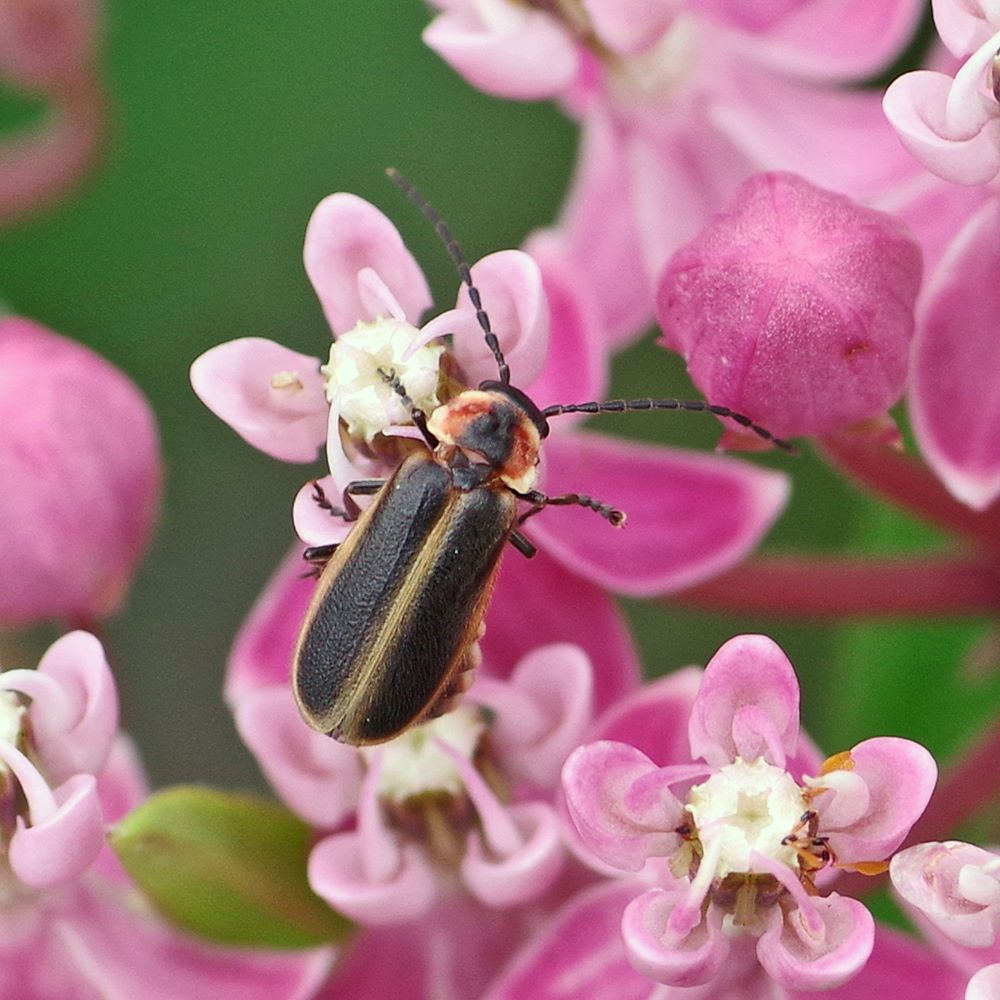
SOLDIER BEETLE – These guys drive the BugLady crazy. They’re lightning beetle mimics, and they’re pretty good at it, and she always overthinks the ID. She doesn’t know why they’re imitating the closely-related lightning beetles – alarmed lightning beetles discharge poisonous blood/hemolymph from their leg joints, but alarmed soldier beetles do, too.
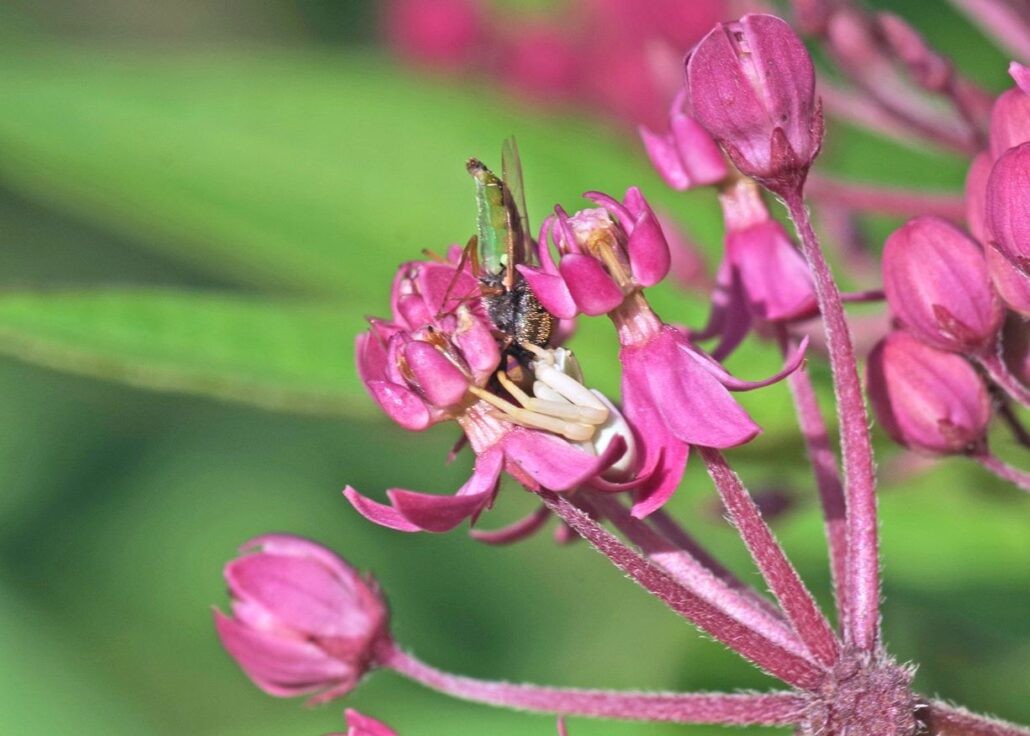
CRAB SPIDER –This Goldenrod crab spider tucked itself down between the milkweed flowers and ambushed an Odontomyia soldier fly https://bugguide.net/node/view/417289/bgimage.
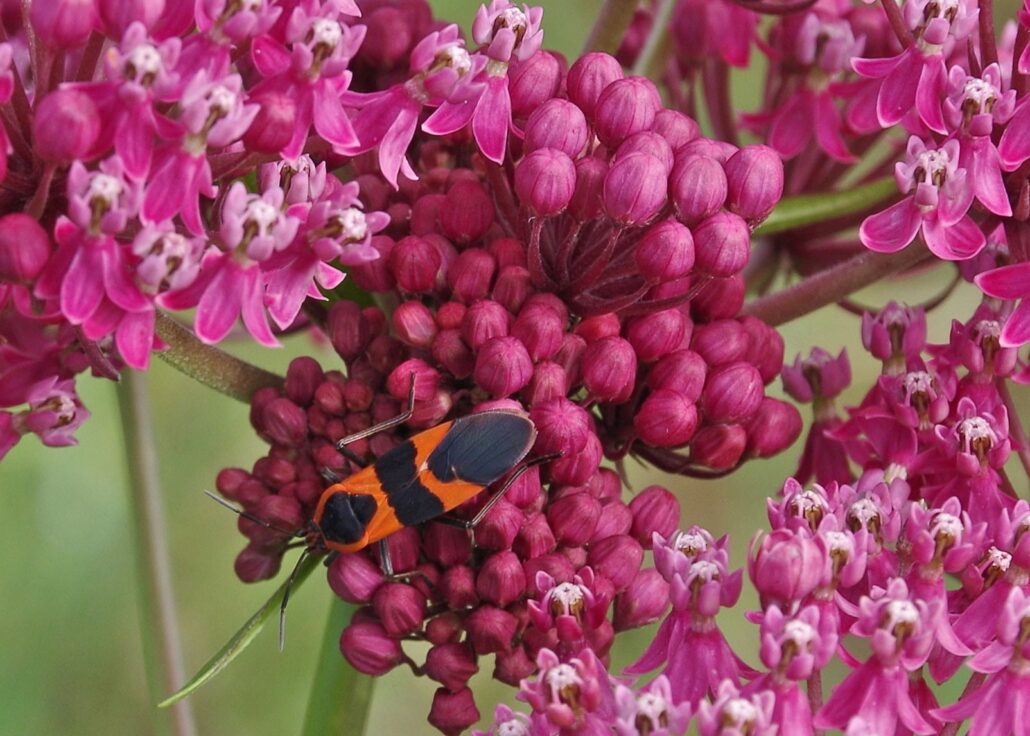
LARGE MILKWEED BUG – What a beauty! Large milkweed bugs are seed bugs – they feed by poking their beaklike mouthparts through the shell of a milkweed pod and sucking nutrients from the seeds. They don’t harm the plant (just the seed crop), and they don’t harm monarch caterpillars, either. Like other milkweed feeders, they sport aposematic (warning) colors to inform predators of their unpalatability. Large milkweed bugs don’t like northern winters and are migratory – like monarchs, the shortening day lengths, the lowering angle of the sun, and increasingly tough milkweed leaves signal that it’s time to go, and they travel south to find fresher greens. Their descendants head north in spring.
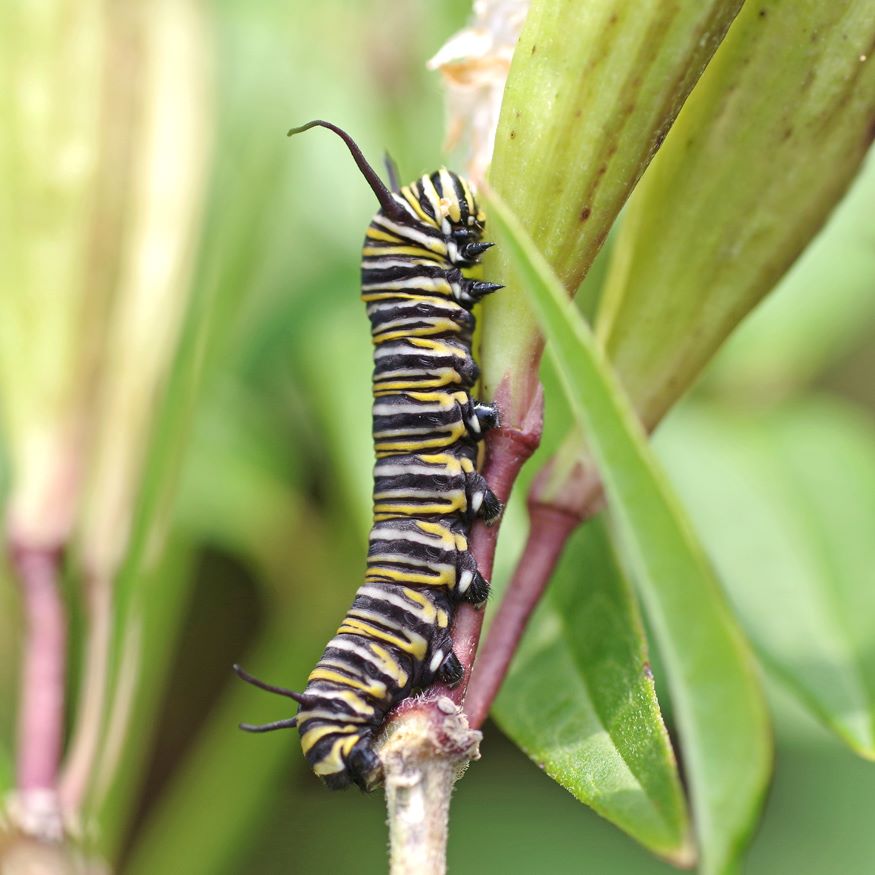
MONARCH CATERPILLAR – Common milkweed and Swamp milkweed are Monarch butterflies’ top picks for egg laying.
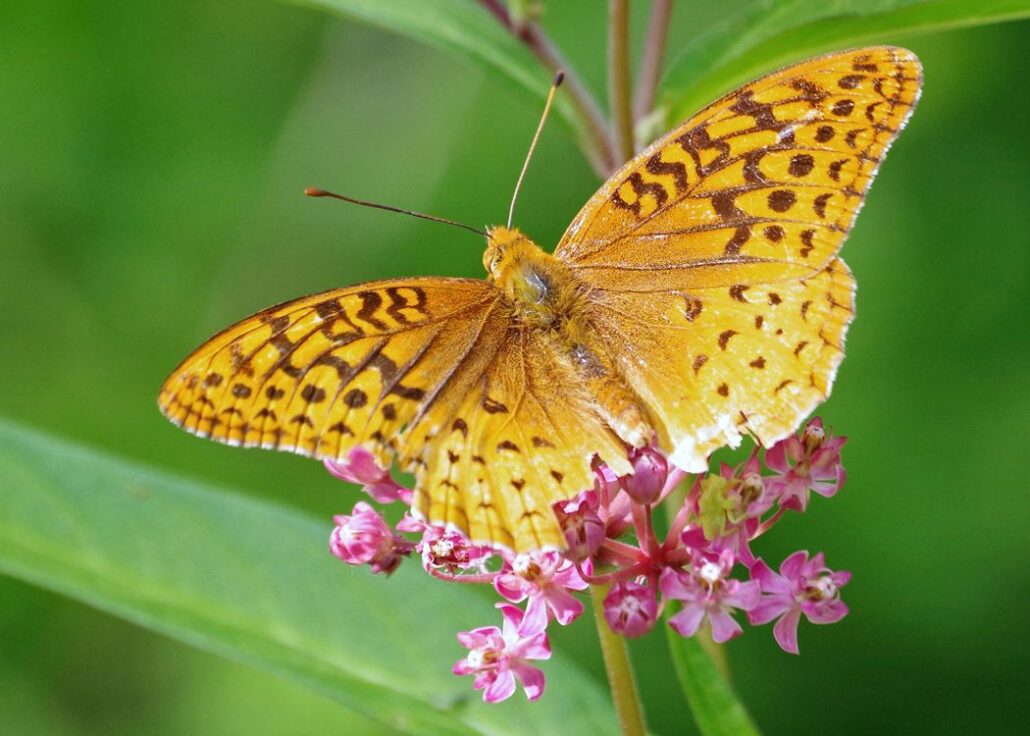
GREAT-SPANGLED FRITILLARY – The other big, orange butterfly. Adults enjoy milkweeds and a variety of other wildflowers, and their caterpillars feed on violets – if they’re lucky enough to connect with some. Females lay eggs in fall, near, but not necessarily on, violets, and the caterpillars emerge soon afterward. They drink water but they don’t eat; they aestivate through winter in the leaf litter and awake in spring to look for their emerging host plants.
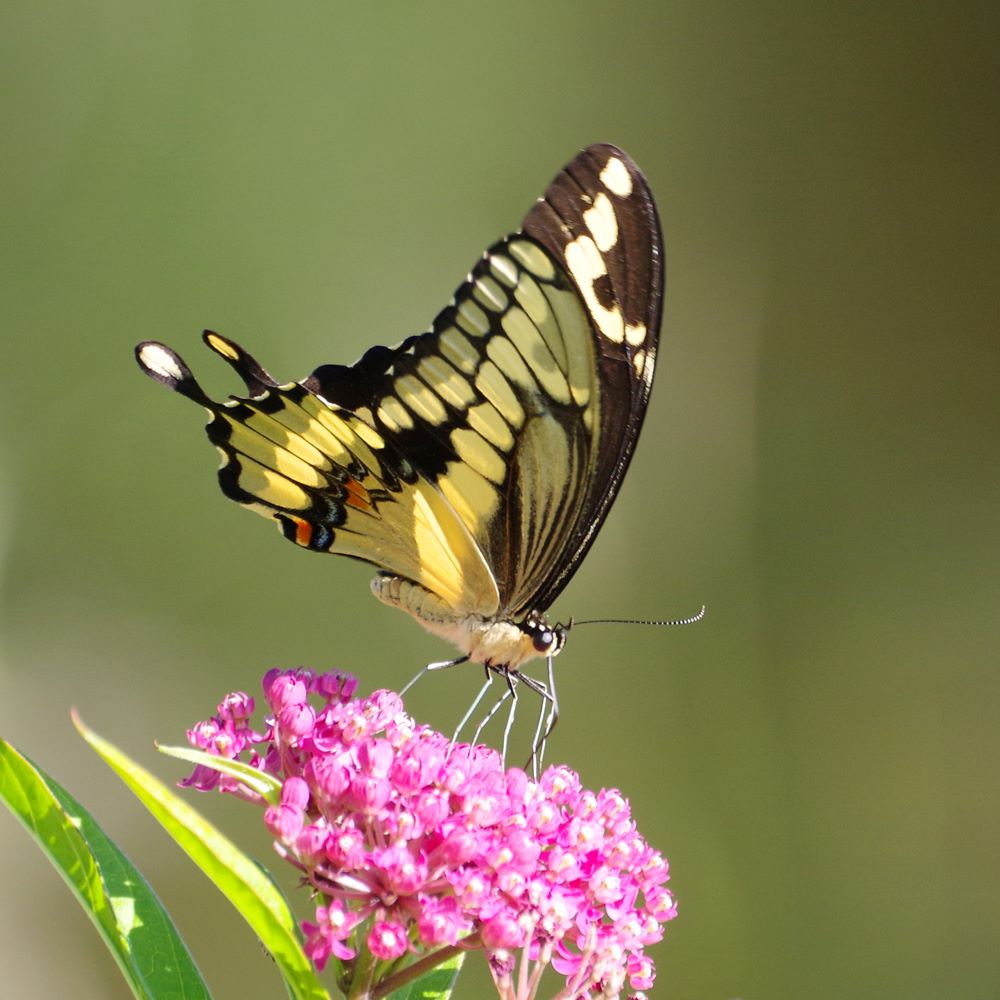
GIANT SWALLOWTAIL – A southern butterfly that seems to be getting a foothold in Wisconsin. The book says they are annual migrants that produce a generation here in summer and that their caterpillars can’t tolerate Wisconsin winters, but the BugLady has seen very fresh-looking Giant Swallowtails here in May that didn’t look like they had just been on a long flight. Their caterpillars are called Orange Dogs in the South, because their host plants are in the Rue/Citrus family Rutaceae. In this neck of the woods, females lay their eggs on Prickly ash, a small shrub that’s the northernmost member of that family.
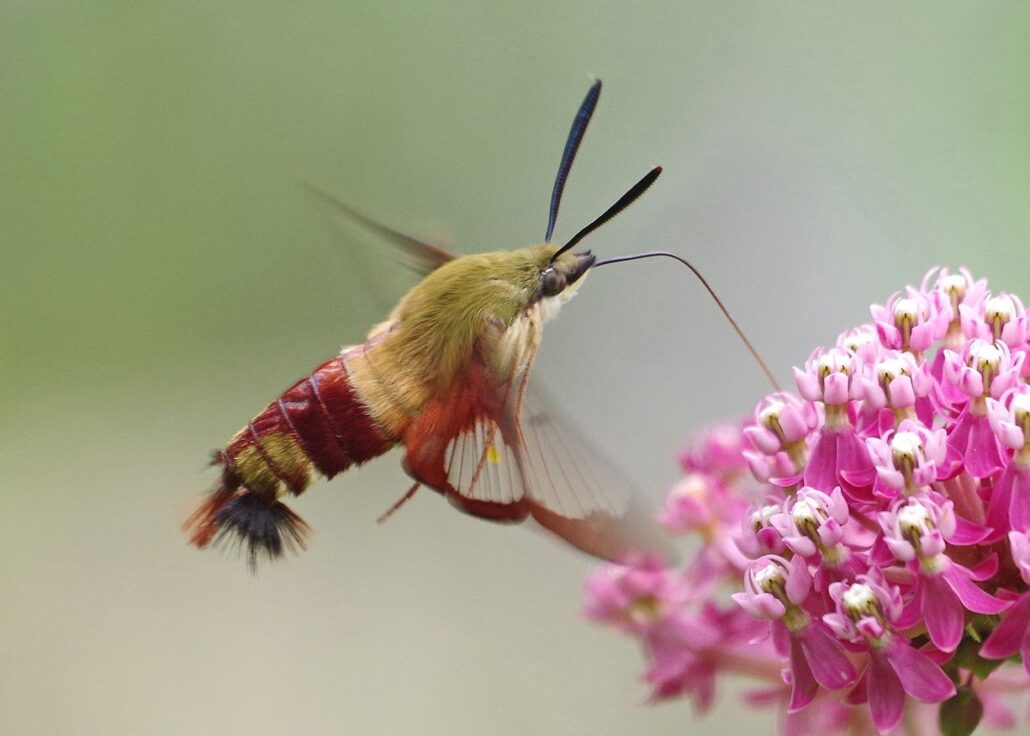
CINNAMON CLEARWING MOTH – A nectar-sipper but, since it doesn’t land, not a serious pollinator.
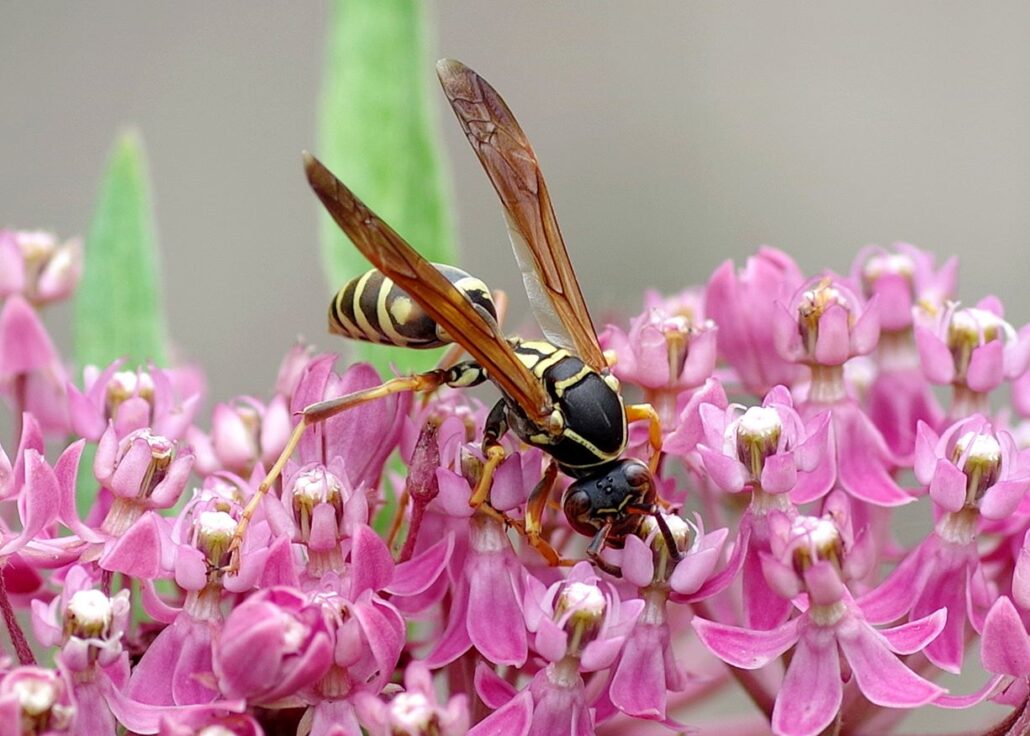
NORTHERN PAPER WASP – Butterflies love Swamp Milkweed, and so do wasps. The Northern paper wasp is the social wasp that makes a smallish (usually fewer than 200 inhabitants) open-celled, down-facing, stemmed nest https://bugguide.net/node/view/1411890/bgimage. “Northern” is a misnomer – they’re found from Canada through Texas and from the Atlantic well into the Great Plains. Her super power is chewing on cellulose material, mixing it with saliva, and creating paper pulp. She may be on the swamp milkweed to get pollen and nectar for herself or to collect small invertebrates to feed to the colony’s larvae. Curious about Northern paper wasps? See https://bugeric.blogspot.com/2010/09/wasp-wednesday-northern-paper-wasp.html.
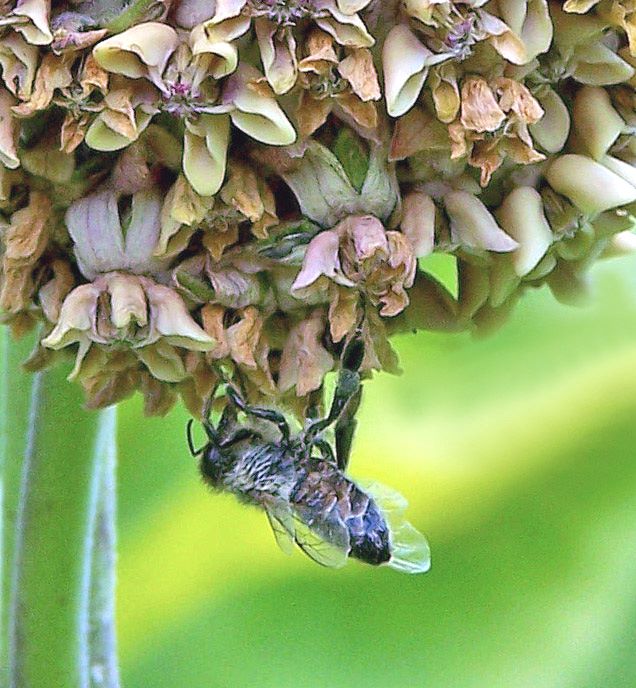
Also seen were ants, leafcutter bees, sweat bees, Great black wasps, Great golden digger wasps, Red soldier beetles, Fiery and Broad-winged Skipper butterflies, and Thick-headed flies.
Kate Redmond, The BugLady
Bug of the Week archives:
http://uwm.edu/field-station/category/bug-of-the-week/

